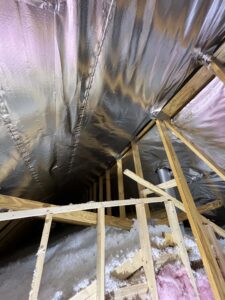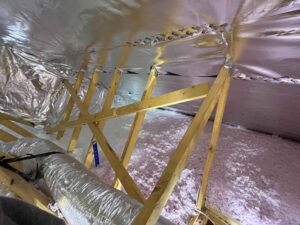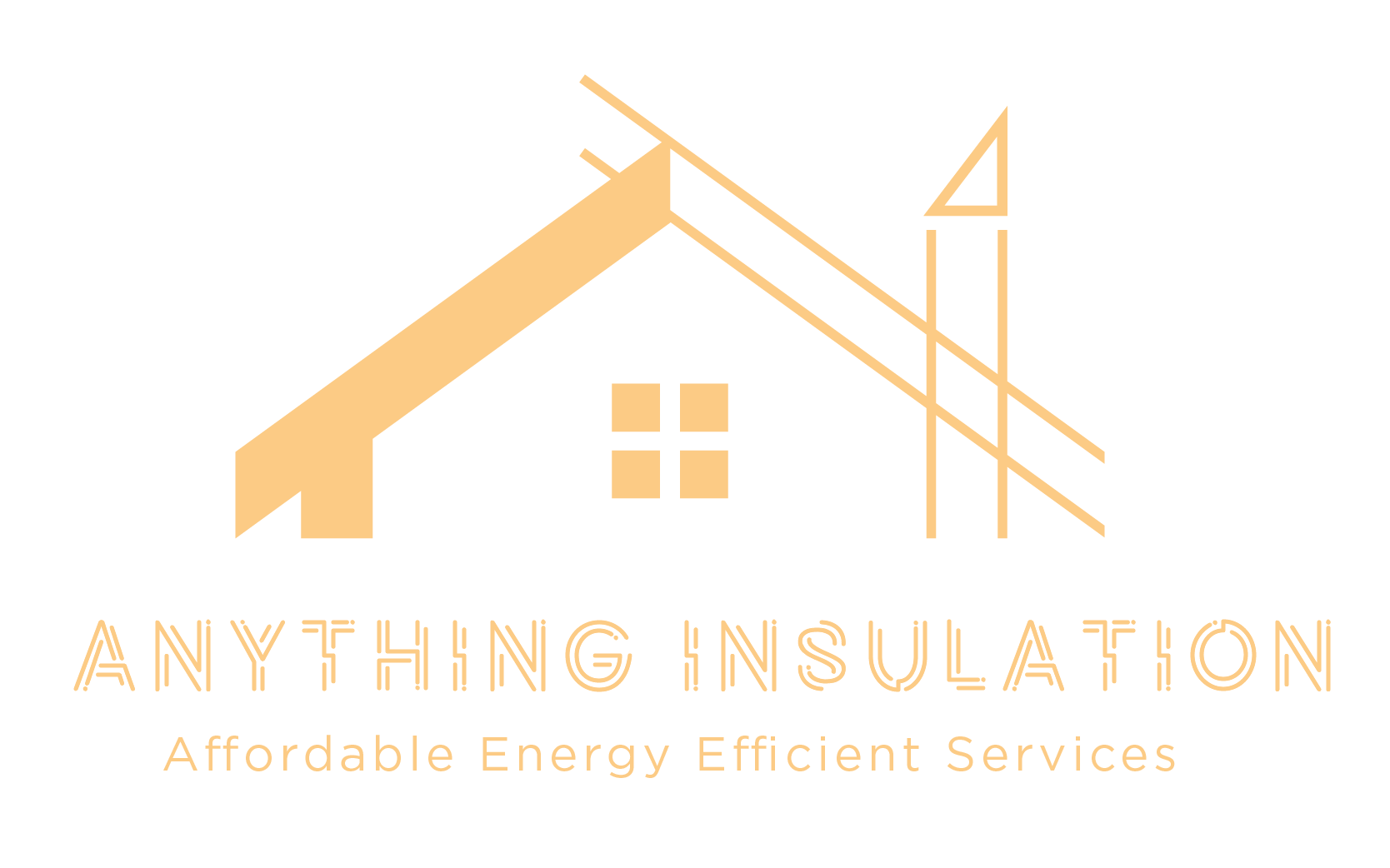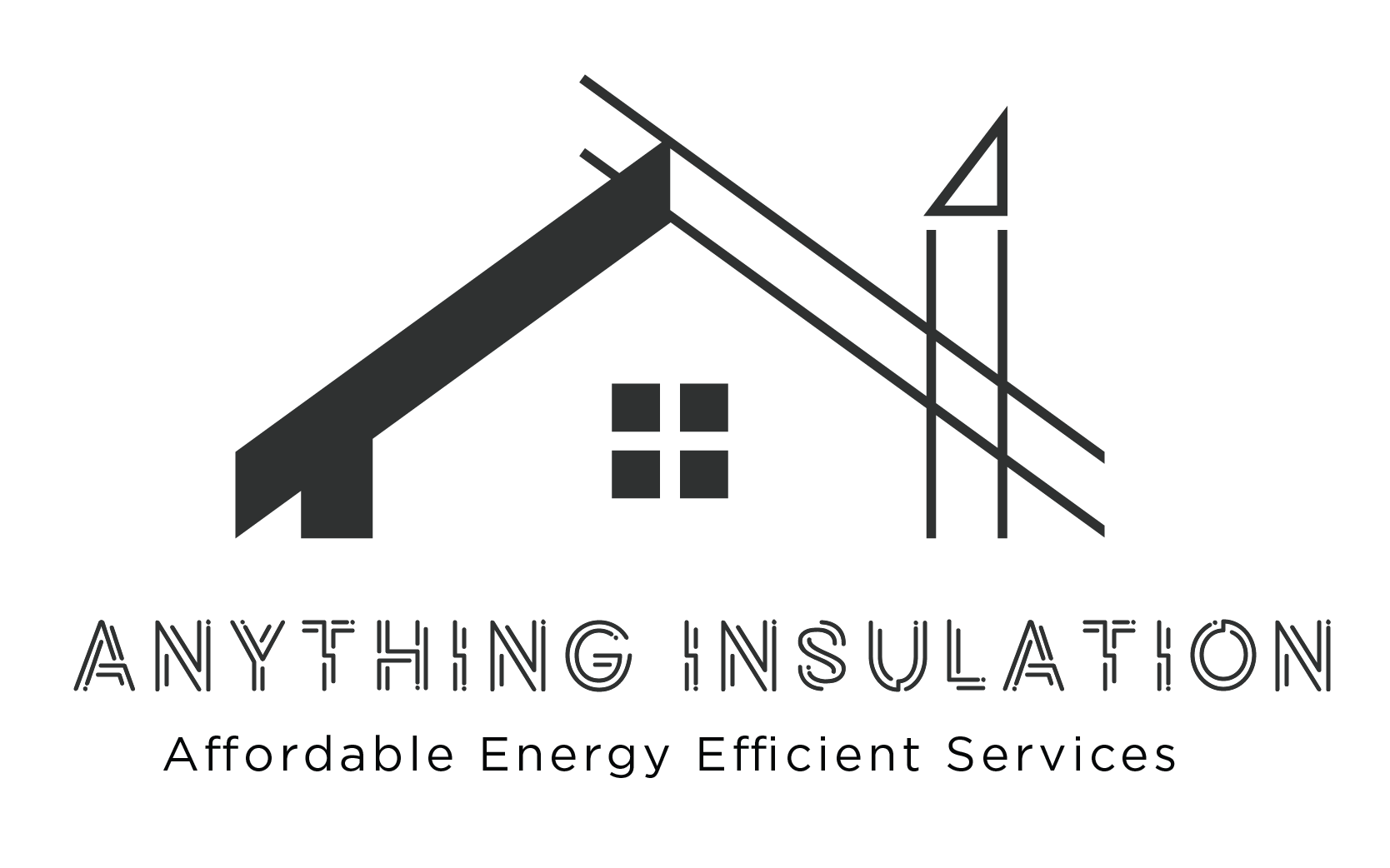RADIANT BARRIER
REDUCE SUMMER HEAT GAINS AND REDUCE WINTER HEAT LOSS
Radiant heat accounts for 93% of heat gain in the summer and 50-60% of heat loss in the winter. Radiant Barrier is applied to your roof rafters to ensure that reduce the heat transfer by thermal radiation across the air space between the roof deck and the attic floor.
Reflect
Reflect over 95% of the sun’s heat away from your home.
Lower
Lower the temperatures in your attic by 30-40 degrees.
Improve
Improve the efficiency of insulation – makes R-19 work like R-35.
Common Questions About Radiant Barrier
What is Radiant Barrier?
A radiant barrier or foil radiant barrier has a reflective surface that bounces away the sun’s rays and reduces the radiant heat that enters your home. Yes, we use a radiant barrier in your attic, just underneath the roof. A radiant barrier is effective at reflecting 95% of radiant heat. We strongly recommend installing radiant barriers when your house is under direct sunlight throughout the year or if the rooms and living spaces underneath the attic space become unbearably hot during the day.
How Does Radiant Barrier Work?
 Our radiant barriers and reflective insulation systems work by reducing radiant heat gain. To be effective, the reflective surface must face an air space. Because dust accumulation on the reflective surface will reduce its reflective capability, we ensure your radiant barrier installation is aligned to minimize dust accumulation on the reflective surface.
Our radiant barriers and reflective insulation systems work by reducing radiant heat gain. To be effective, the reflective surface must face an air space. Because dust accumulation on the reflective surface will reduce its reflective capability, we ensure your radiant barrier installation is aligned to minimize dust accumulation on the reflective surface.
When the sun heats a roof, it’s primarily the sun’s radiant energy that makes the roof hot. Much of this heat travels by conduction through the roofing materials to the attic side of the roof. The hot roof material then radiates its gained heat energy onto the cooler attic surfaces, including the air ducts and the attic floor.
Our radiant barriers reduces the radiant heat transfer from the underside of the roof to the other surfaces in the attic. They work best when it is perpendicular to the radiant energy striking them. Also, the greater the temperature difference between the sides of the radiant barrier material, the greater the benefits a radiant barrier can offer.
Our radiant barrier insulation options are more effective in hot climates than in cool climates, especially when cooling air ducts are located in the attic. Some studies show that radiant barriers can reduce cooling costs 5% to 10% when used in a warm, sunny climate.
We typically use a perforated aluminum foil to block the radiant heat. This material works by using its shiny, metallic properties to reflect thermal infrared radiation. It also has low emissivity, which is the measurement used to read an object’s ability to produce infrared energy. Often available as; single-sided foil, foil-faced roof sheathing material, double-sided foil with reinforcement, foil-faced insulation, or multi layered foil systems.
What are the Benefits of Radiant Barrier?
Is attic radiant barrier worth it? Well, as an experienced radiant barrier installation company in Los Angeles, we believe attic radiant barrier benefits are certainly a game-changer when it comes to keeping your home comfortable.
The benefits include:
- Blocking sunlight from heating up your attic space
- Reducing the carbon footprint of your home
- Reducing your utility bills and maximize the energy efficiency of your home
- Preventing harmful condensation from forming in the attic
- Maximizing performance and longevity of your HVAC system
- Complementing other attic insulation solutions
- Making your home more comfortable, especially during the warm season
- Complementing your current insulation to boost thermal efficiency
- Infestation prevention since the material is not favorable for pests and rodents due to its inorganic composition
Which Is Better: Insulation Or Radiant Barrier?
 As an experienced radiant barrier insulation contractors, we would advise you to get both. Installing a radiant barrier with another insulation is like getting the best of both worlds and allowing you reap the benefits of a full insulation ecosystem. When you install both, you maximize your insulation benefits, energy savings and your family’s comfort.
As an experienced radiant barrier insulation contractors, we would advise you to get both. Installing a radiant barrier with another insulation is like getting the best of both worlds and allowing you reap the benefits of a full insulation ecosystem. When you install both, you maximize your insulation benefits, energy savings and your family’s comfort.
Radiant barriers are your home’s first line of defense against the sun’s rays. It is powerful in reducing radiant heat and restricting conductive heat flow. In simpler terms, a radiant barrier decreases the sun’s heat that penetrates your home and is not very good at transferring heat but excellent at deflecting it.
On the other hand, you cannot do away with insulation. Insulation seals your attic from pollens, allergens, mold spores, and other threats. While it does let some heat flow, it still slows it down before reaching your living spaces and rooms. Radiant barriers complement and reinforce insulation this way.
Do Radiant Barriers Have an R-Value
No. R-values apply only to solid insulation or to insulating systems that control heat flows other than radiation. Radiant barriers use emissivity E-value or thermal emittance is the ability of a surface to radiate or emit energy in the form of long wave electromagnetic radiation.
It is represented by a value from 0 to 1. The closer the value is to 1, the less effective the surface is at impeding radiant heat transfer. Say a material has an emissivity of 0.72. Thus, when that material is heated above the temperature of surrounding surfaces, it will tend to transfer 72% of its heat energy by radiation.

